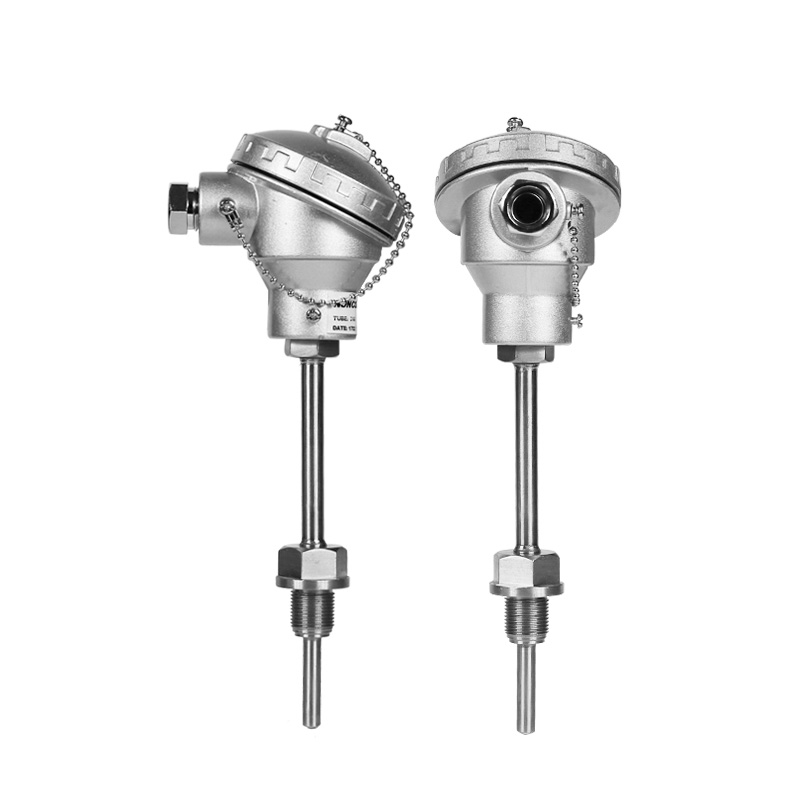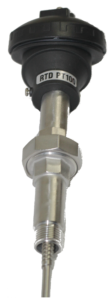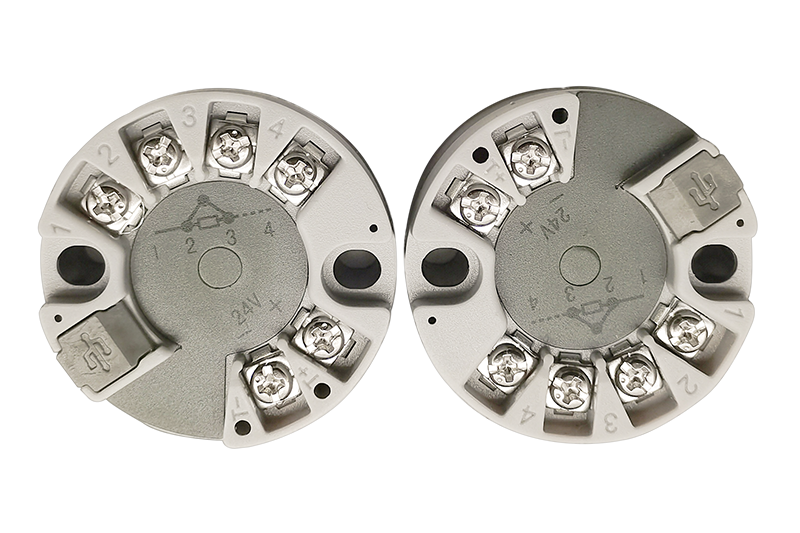 The difference between the temperature sensor and the temperature transmitter
The difference between the temperature sensor and the temperature transmitter
The use of temperature sensors and temperature sensors can be a complex and effective process. In order to effectively use these two tools, it is best to receive education and understand the differences, and how they measure the temperature changes together.
Below, we will explain the difference between the two and how they are related to provide accurate temperature measurement.
temperature sensor
Temperature sensor is a device that provides temperature measurement through the electrical signal. The sensor consists of two metals, and once it is perceived to changes in temperature, voltage or resistance will be generated. To learn more about the working principle of the temperature sensor, click here.
The temperature sensor plays a key role in maintaining a specific temperature in any device used to make from drugs to beer. In order to produce these types of content, accuracy and response temperature and temperature control are crucial to ensure that the final product is perfect.
The temperature sensor has different forms, for different temperature management methods
resistance temperature detector
It is called the thermometer of the thermal resistance, which measures the temperature resistance thermometer through the resistance and temperature of the thermal resistance element. This metal can be made of different materials, including platinum, nickel or copper. However, platinum is the most accurate, so the cost is higher.
Heat
The thermal power puppet is a sensor, which is connected to two points from two wires and two different metals. The voltage between the two wires reflects changes in temperature. Although the accuracy can be slightly lower than the thermometer thermometer, their temperature range is the widest, from -200 ° C to 1750 ° C, and it is generally more cost -effective.
negative temperature coefficient (NTC) thermistor NTC
Thermistor shows the accuracy, predictable and large changes of various temperature changes. With this huge change, this means that the temperature is reflected very fast, but it is also very accurate. Due to this large and fast nature, the NTC thermistor does require linearity-so some mathematics involves.
In short, the temperature sensor is done. It can perceive the temperature of any substance that needs to be measured, whether it is solid, liquid or gas.
Temperature sensor
Temperature transmitter is a device connected to the temperature sensor for transmission monitoring signals.
The temperature sensor is usually a thermal resistance, thermal resistance or the thermocouple sensor (as described above), which will interface with DCS, PLC, data recorder or hardware display.
The role of a temperature transmitter is to isolate the temperature signal, filter out any EMC noise, zoom in and converts the temperature sensor signal to 4-20mA or 0-10V DC range.
4-20MA temperature transmitter is the most common when talking about manufacturing, because most of the formatting communication used by most industrial equipment is within this temperature range.
The temperature of the transmitter can be adjusted proportionally inside the device to meet the needs of the application. As far as the temperature meter is concerned, 4MA represents -17.7 ° C or 0 ° Hua's temperature. 20MA is the highest measurement temperature, representing 37.7 ° C or 100 ° Hua's temperature.
The working principle of the temperature transmitter is from the input current of the remote DC power to connect to the sensor input terminal. The actual signal is transmitted as a change in the power supply. In order to connect the temperature transmitter, only two copper threads are needed.
Simply put, the temperature transmitter is an electronic instrument, which is an interface with the temperature sensor. It isolate, enlarged, filter noise, and converts the signal sent by the sensor into a control device. It is a tool to help measure and alert temperature changes.
So what are the advantages of using temperature transmitters relative to more traditional measurement methods?
1. AC power does not need to operate a two -line transmitter in a distant position.
2. Electric noise is neither big nor strong
3. The temperature transmitter is cheaper because the wire is not expensive.
Now we can see how these two devices work, and what is the key difference?
The difference between the temperature sensor and the temperature transmitter
We know and understand the main functions of the temperature sensor and the temperature transmitter, so it is easy to see the difference between the two.
The most obvious difference is that the temperature sensor is a device that measures or perceive the physical temperature and converts it into a measured current unit, including voltage or resistance. However, the temperature sensor is a device connected to the sensor. Its working principle is to convert the measured temperature into a signal so that it can be seen, recorded and maintained. Although they are all different tools, they work together and play a key role in ensuring accurate temperature measurement and communication to control temperature.

 The difference between the temperature sensor and the temperature transmitter
The difference between the temperature sensor and the temperature transmitter



